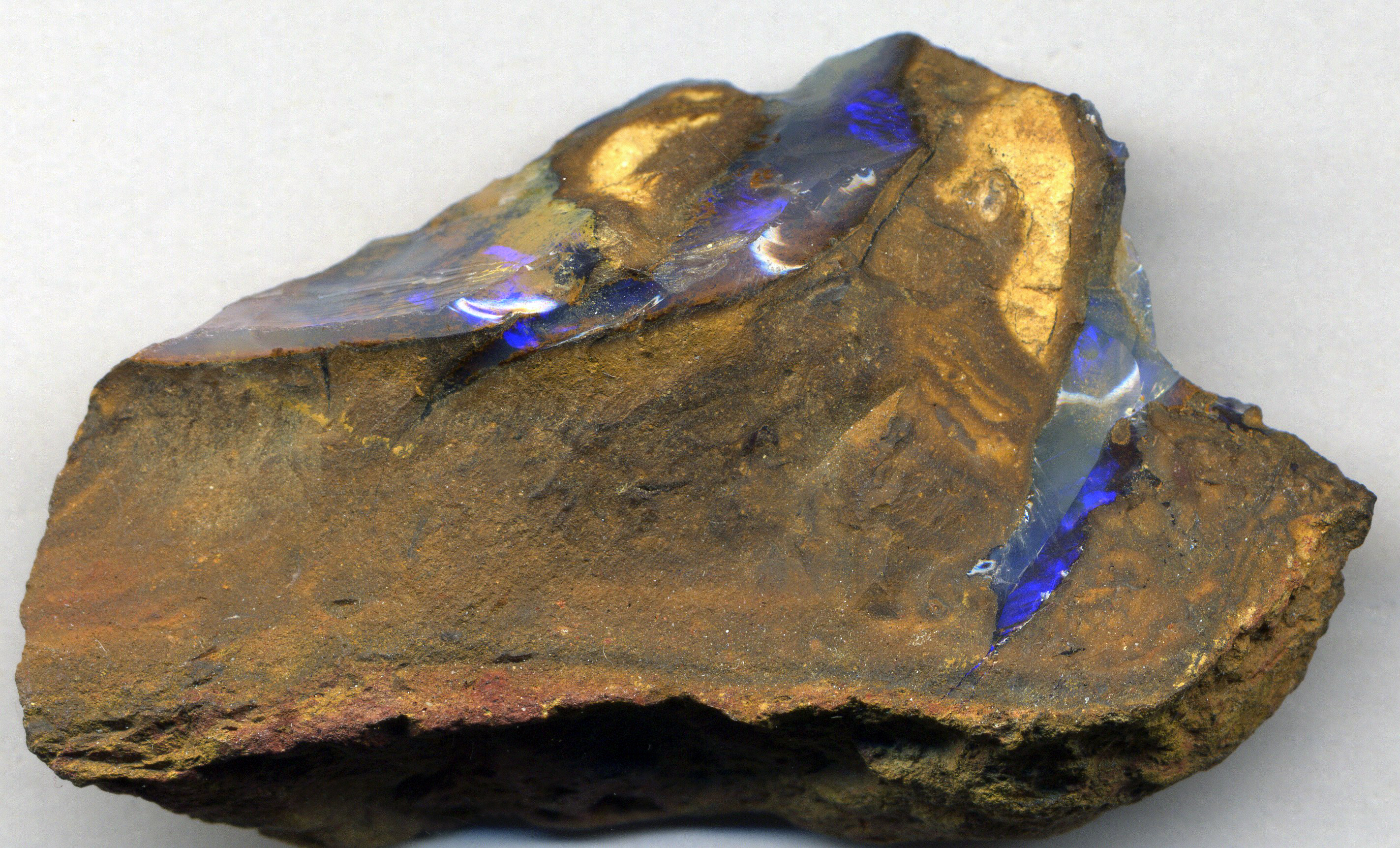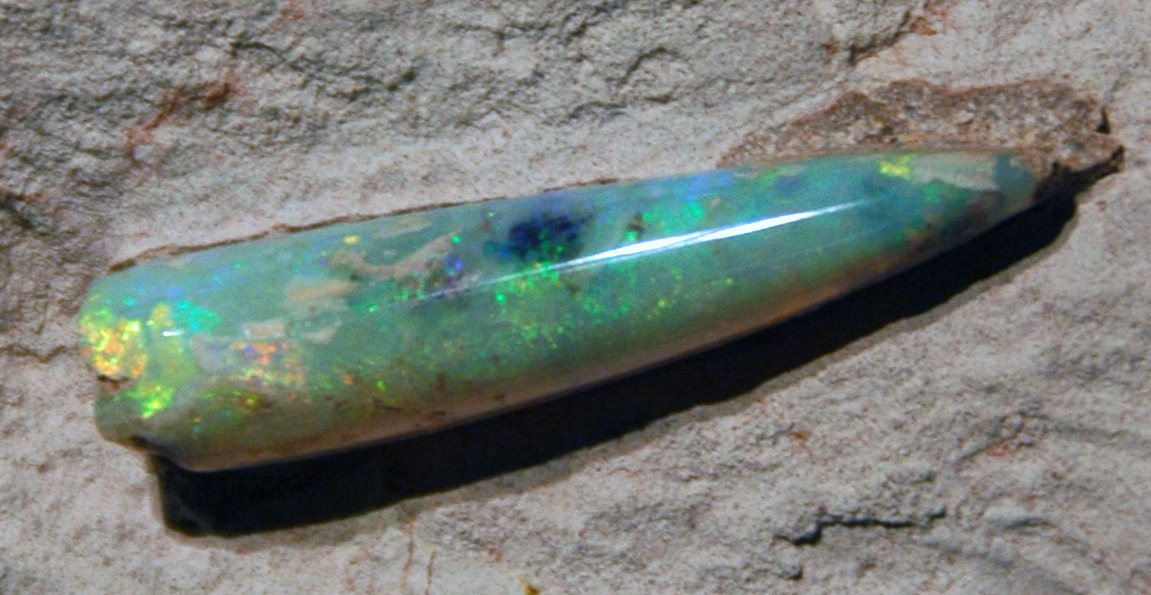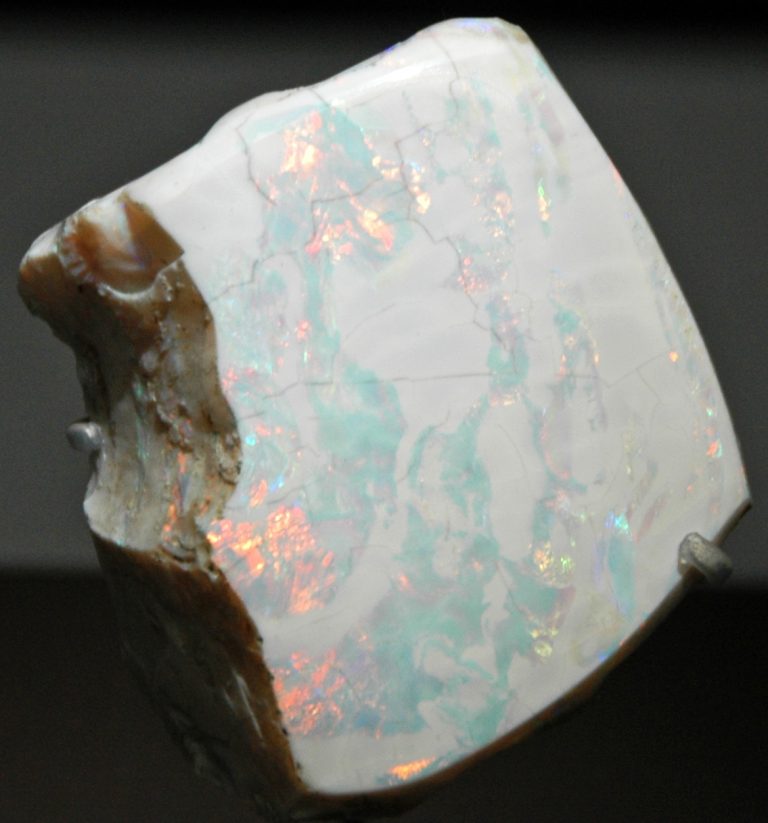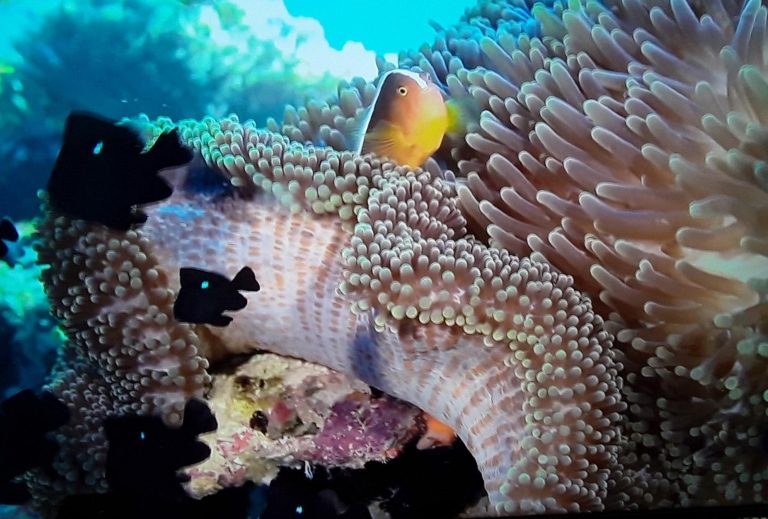The name “opal” derives from the Latin word opalus, which means “precious gem,” as well as from the Greek word opallios, which means “to see a color change.” This prized gemstone has inspired fantastic folktales, and a fine specimen can fetch a whopping sum, as we saw at the recent auctioning of the famous “Americus Australius.”
Opal has historically enjoyed a reputation for mystery and luck, with its many colors that enchant us all at once. The birthstone for October opal is widely regarded as a symbol of hope, honesty, purity, and truth.
Composition of opal
Opal is hydrous silica (minuscule silica spheres bonded with water), ranking between 5 and 6 on the Mohs hardness scale. When light passes through the spheres, it bends and generates a rainbow of colors. Precious opal offers a magnificent dance of hues (opalescence.) Shifting the stone causes light to hit distinct spheres at different angles within the stone, and they appear to be continually changing color.
The majority of opal is dull and lifeless, and the so-called common opal is often gray or yellowish in color and waxy in appearance. It is rare for a piece of opal to be discovered that is translucent enough to facet. Since it is amorphous rather than crystalized, opal is not considered a mineral, but a “mineraloid.”
Opal Folklore and literature
The formation of opals is the subject of Aboriginal legends in Australia. They believe that the Creator arrived via a rainbow and caused the creation of opals wherever his feet touched the earth.
Success
You are now signed up for our newsletter
Success
Check your email to complete sign up
The Aztecs named the fire opal after Quetzalcoatl, their feathered serpent deity.” According to them, the “Stone of the Bird of Paradise” could inspire new beginnings and stimulate creativity. They also believed it had the potential to bring about required destruction.
Historical novelist and poet Sir Walter Scott wrote a Gothic novel called Anne of Geierstein (1829), which cast a shadowy hue on the reputation of Opal. The story tells of an enchanted princess named Hermione. Her hair was usually tied up with an opal diadem that “displayed a subtle hue of red like a spark of fire,” and at times she resembled an invincible spirit. A “twinkling and flashing glimmer which seemed to be released by the gemstone itself” appeared whenever she became upset or enthusiastic.
When the princess was attending a baptism, the father of the baby dipped his finger in the font, offering holy water to his wife, and put the rest on Lady Hermione’s brow. A drop landed on her opal talisman, from which shot out a dazzling light, leaving the opal “colorless as a common pebble.” Hermione then fell to the ground and was reduced to a smattering of gray ashes within hours.
Queen of Gems
The best opals are beautiful, rare, and costly. The gems can resemble aurora borealis encapsulated in stone, a snowy landscape speckled with colored fireflies, or even a black night sky striped with rainbow illumination. Opal has been prized for its distinctive attributes and beauty since ancient times.
Australia produces by far the best and most beautiful opals. Some are so spectacular that they have their own names, such as the Empress, the Red Admiral, the Pandora, the Light of the World, and the Harlequin Prince.

Categories of gem opals
Different kinds of opals are found in a variety of locations in Australia.
Light or White Opal is mostly mined in the South Australian fields of Mintabie, Coober Pedy, and Andamooka. Black Opal is mined in New South Wales’ Lightning Ridge.
What makes opal distinctive is its unique display of color called “fire.” There are four opal gem types:
- Australian white opal has a pale white or light body tone and resembles porcelain or milk. The fire appears as shimmering specks of rainbow-colored film. White opals are the most commonly used opal in jewelry making.
- Black opal also contains fire. The color play in black opals is accentuated by the dark gray or black body color, Black opals are extremely rare and costly.
- Water opal is the translucent colorless kind, which has fire with flashes of color swimming inside.
- Fire opal has an orange and reddish transparent body hue. It may or may not have fire. Opals with reddish or orange hues are classified as “fire opals” although they may not have any fire at all.
Opal’s most precious specimens
When a massive white opal of gem grade was auctioned off on February 20 in Alaska, it fetched a whopping $143,750. According to Alaska Premier Auctions & Appraisals, the opal is one of the biggest opal specimens in recorded history. The opal nicknamed “Americus Australis” weighs over 11,800 carats.
“Americus Australis” is described as the “sister stone” of the “Olympic Australis,” the record-breaking 17,000 carats “Olympic Australis” that was discovered in 1956.
Fred von Brandt, an Alaskan gold miner, owned the large stone until it was sold last month. The gemstone, which is larger than a brick, is split into two pieces. Von Brandt explained that jewelers once employed the tradition of splitting a gem into two parts to show its purity.
According to the Associated Press, von Brandt’s grandfather purchased the opal from Australian opal merchant John Altmann in the late 1950s. The von Brandt family owned the opal for over six decades and exhibited it in gem shows and family enterprises in California, Oregon, and Alaska.
The Americus Australis was kept in a linen closet in Big Lake, north of Anchorage after Von Brandt moved to Alaska over a year ago. It had been “locked up long enough,” he said, and that “it’s time to put it back out in the world and see what interest it might generate.”
Predicted to fetch over $250,000 at the February auction, according to pre-sale estimates, the final bidder got a real deal.
Opalized fossils
Lightning Ridge is a small outback town located near the southern border of Queensland and is well-known for its abundance of opal. The region has produced significant quantities of black opal. This highly valuable geological marvel has been extensively mined and fossilized there since the early twentieth century. Almost every type of fossil found at Lightning Ridge has been opalized, giving a fascinating and extraordinary image of prehistoric life.
An opalized fossil is a natural casting in which the surface has been entirely coated with opalized material. It takes an astounding 5 to 6 million years for a 1-centimeter opal to mature and attain its full beauty.

In 1984 Bob Foster discovered the most complete dinosaur skeleton ever found in New South Wales. The glittering opal-encrusted bones were donated to the Australian Opal Centre at Lightning Ridge. The findings were published in the Journal of Vertebrate Paleontology and revealed the first fossil evidence of a dinosaur herd in Australia.
The opalized remains represent the newly described species Fostoria dhimbangunmal. The species is the youngest Australian member of the iguanodontian dinosaurs, a plant-eating group that had a horse-shaped skull and a build similar to the kangaroo. The name of the new dinosaur is ‘dhimbangunmal’ meaning ‘sheep yard’ in the Yuwaalaraay, a language of the Indigenous people living in the area near Lightning Ridge.















